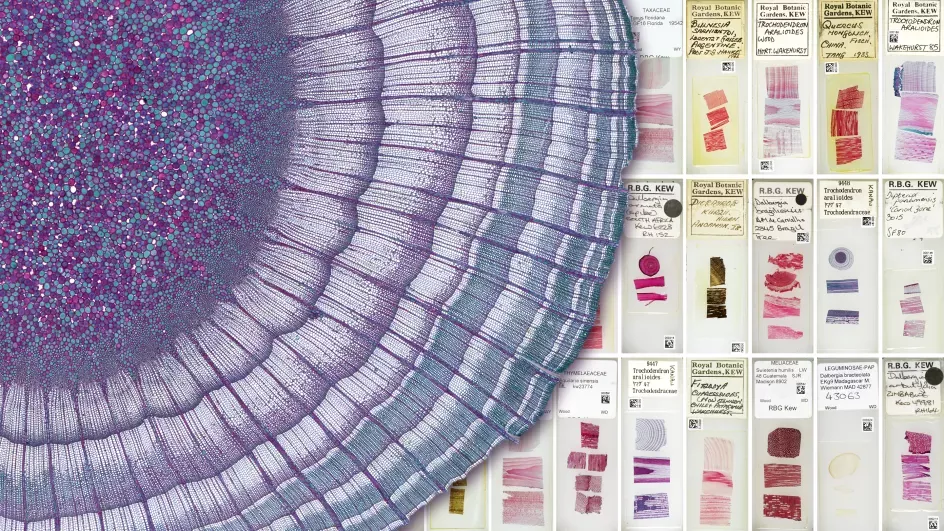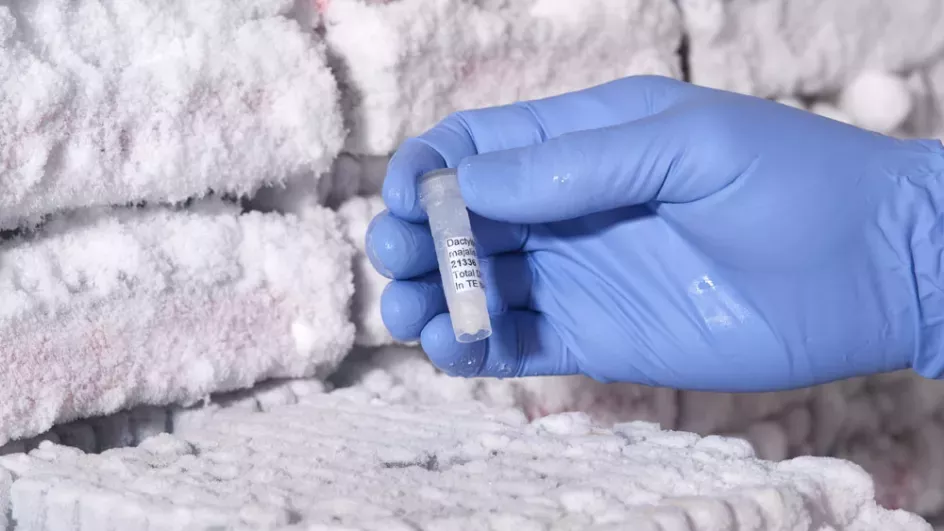DNA and Tissue Bank
Our DNA and Tissue Bank contains approximately 60,000 samples representing nearly all families (507 families), and over half the genera (around 7,100) of flowering plants. The composition of the collection reflects studies carried out at Kew over the last 24 years.

Why collect DNA and tissue samples?
DNA and tissue banks are valuable resources for which, over time and with the development of new technologies and techniques, new uses are found. As material becomes harder to collect in situ, researchers are turning to natural history collections to answer questions about evolution and biodiversity. However, the quality of DNA and secondary metabolites that can be extracted from these is not ideal. Kew’s DNA and Tissue Bank was created to facilitate access for researchers carrying out non-commercial studies.
What is in the collection?
The DNA and Tissue Bank at Kew was established in 1992 and currently contains approximately 48,000 samples of plant genomic DNA stored at -80°C and over 12,000 silica dried tissue samples at room temperature. There are approximately 35,000 species represented in the collection, making the freezer in which these are stored perhaps the most biodiverse cubic metre on this planet.
All major plant groups are represented within the collection, reflecting the broad range of studies carried out in the Jodrell Laboratory at Kew. We have a particularly numerous orchid collection with around 5,500 DNA samples (representing 3,161 species) and there are also a number of samples from rare and endangered species.
Two of the largest plant families, Fabaceae and Orchidaceae are well represented, but Asteraceae are poorly represented in the collection, with 736 samples from 292 genera (about 15% of the total).
There are multiple representatives within some species used in population study projects. DNA samples are sent to collaborators around the globe. It is our aim to facilitate taxonomic and evolutionary studies worldwide within the letter and the spirit of the Convention on Biological Diversity (CBD), and its agreements with partner countries, and accordingly some material is restricted.
Adding to the collection
Our aim over the next few years, is create tissue samples (and make herbarium vouchers) from all plant species grown at Kew.
We also extract and bank samples obtained from Kew-collecting expeditions that have been dried in silica in the field, if we have permission from the country of origin to do so.
Where other sources are not available, some extractions are made directly from herbarium specimens. Associated information from all specimens is databased and each sample has a linked herbarium voucher.
Discover more
-

Lab-based Collections
The Lab-based Collections team manage the both the DNA and Tissue Bank Collection and Microscope Slide Collection.
-

The DNA Tissue Bank database
DNA samples can be requested by using the DNA Tissue Bank database.